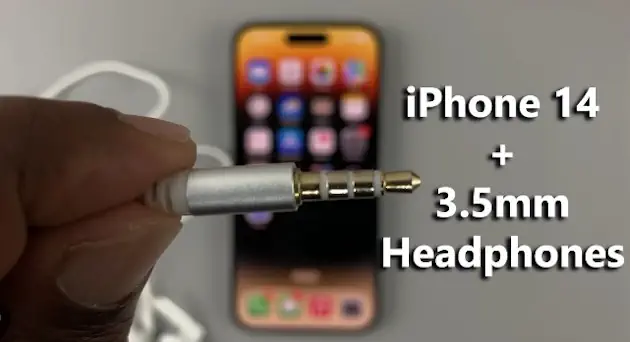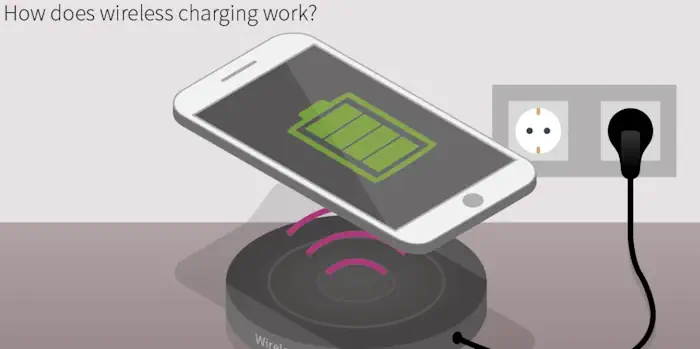Ever been baffled by how Qi charging works?
Well, I was too until I unraveled its secrets. Today, I’m sharing the jaw-dropping magic that powers your smartphone without a single wire.
Get ready to have your mind blown!
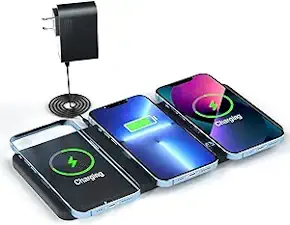
How does Qi charging work?
Qi charging, also known as wireless charging, is a technology that allows you to charge your devices without using physical cables.
It is a wireless charging standard that uses electromagnetic induction to transfer power between devices. It is the most popular wireless charging standard in the world, and is supported by many smartphone manufacturers and other electronics companies.
To use Qi charging, you need a Qi-enabled device and a Qi charging pad. When you place your device on the charging pad, the two coils inside the devices align and create a magnetic field. This magnetic field induces an electric current in the coil of the device, which charges the battery.
Qi charging is relatively slow compared to wired charging, but it is very convenient. You can simply place your device on the charging pad and forget about it, without having to worry about plugging in a cable.
Qi charging vs cables
Qi charging and cables are both ways to charge your device, but they have their own advantages and disadvantages.
Qi charging (Wireless charging) pros and cons
These are the main advantages of Qi charging:
- Convenience: Qi charging eliminates the need for physical cables, making it easy to charge your devices by simply placing them on a charging pad or stand.
- Aesthetics: It provides a cleaner and more organized look to your workspace or home since there are no visible cables cluttering the area.
- Reduced Wear and Tear: Over time, constantly plugging and unplugging cables can lead to wear and tear on your device’s charging port, which is not a concern with wireless charging.
- Compatibility: Qi charging is a standardized technology, allowing Qi-compatible devices to work with Qi-certified charging pads from various manufacturers.
The main disadvantages of Qi charging include:
- Slower Charging Speed: Qi charging is generally slower compared to high-speed wired charging methods like USB-C Power Delivery. This might not be ideal when you need a quick charge.
- Distance Limitation: Qi charging requires close proximity between the device and the charging pad. If the alignment is off, it may not charge correctly.
- Inefficiency: Wireless charging is less energy-efficient than wired charging, leading to some energy loss as heat during the charging process.
Cable charging (Wired charging) pros vs cons
The main pros of cable charging are:
- Faster charging: Wired charging methods, especially those using high-wattage chargers and USB-C Power Delivery, can provide significantly faster charging speeds compared to Qi charging.
- Reliability: Wired charging is generally more reliable since it doesn’t rely on the precise alignment of coils as in Qi charging. You plug in the cable, and it charges.
- Data Transfer: Wired connections can facilitate data transfer between your device and a computer, which is not possible with Qi charging alone.
The cons of the of cable charging include:
- Cable Clutter: Wired charging can lead to cable clutter, especially when charging multiple devices simultaneously. It can make your workspace or home appear less organized.
- Wear and Tear: Over time, plugging and unplugging cables can lead to wear and tear on both the cable and your device’s charging port.
- Compatibility: Some older devices may use proprietary charging cables, which can be less convenient and might not work with other devices.
- Less mobility: With wired charging, you are tethered to the charger, limiting your mobility while using your device.
Top Qi wireless chargers for fast phone charging
Here are the top Qi wireless chargers for fast phone charging in 2023:
Anker PowerWave 15 Pad

The Anker PowerWave 15 Pad is a great all-around Qi wireless charger. It offers fast charging speeds for a wide range of devices, including iPhones and Android phones. It also has a sleek and minimalist design that will look good on any desk or nightstand.
Belkin BoostCharge Pro Wireless Charging Pad 15W
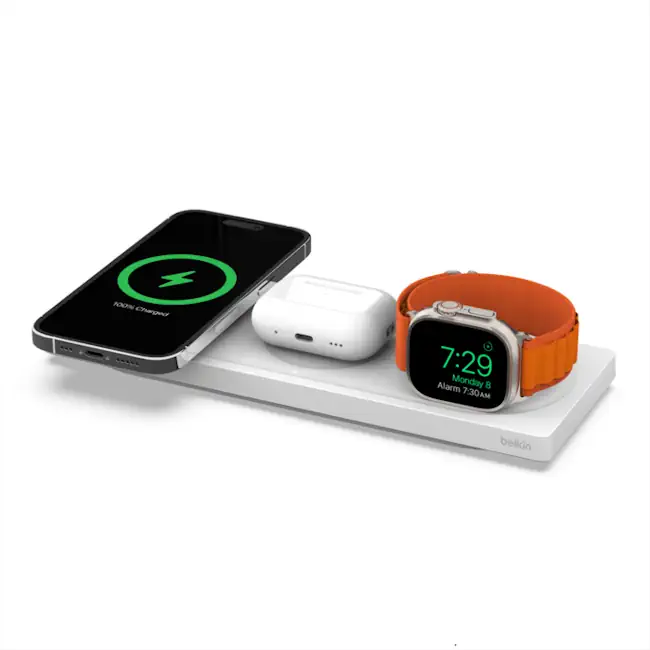
The Belkin BoostCharge Pro Wireless Charging Pad is another great option for fast Qi wireless charging. It offers similar speeds to the Anker PowerWave 15 Pad, but it also has a few additional features, such as foreign object detection and thermal management.
Mophie Wireless Charging Pad+
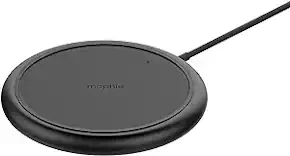
The Mophie Wireless Charging Pad+ is a great option for those who want a Qi wireless charger that can charge multiple devices at the same time. It has two charging pads, one that can charge up to 15W and the other that can charge up to 7.5W. This makes it ideal for charging your phone and smartwatch at the same time, or for charging two phones at the same time.
Samsung Wireless Charger Trio
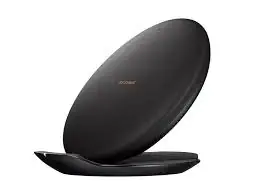
The Samsung Wireless Charger Trio is another great option for those who want to charge multiple devices at the same time. It has three charging pads, all of which can charge up to 15W. This makes it ideal for charging your phone, smartwatch, and earbuds at the same time.
Peak Design Mobile Wireless Charging Stand
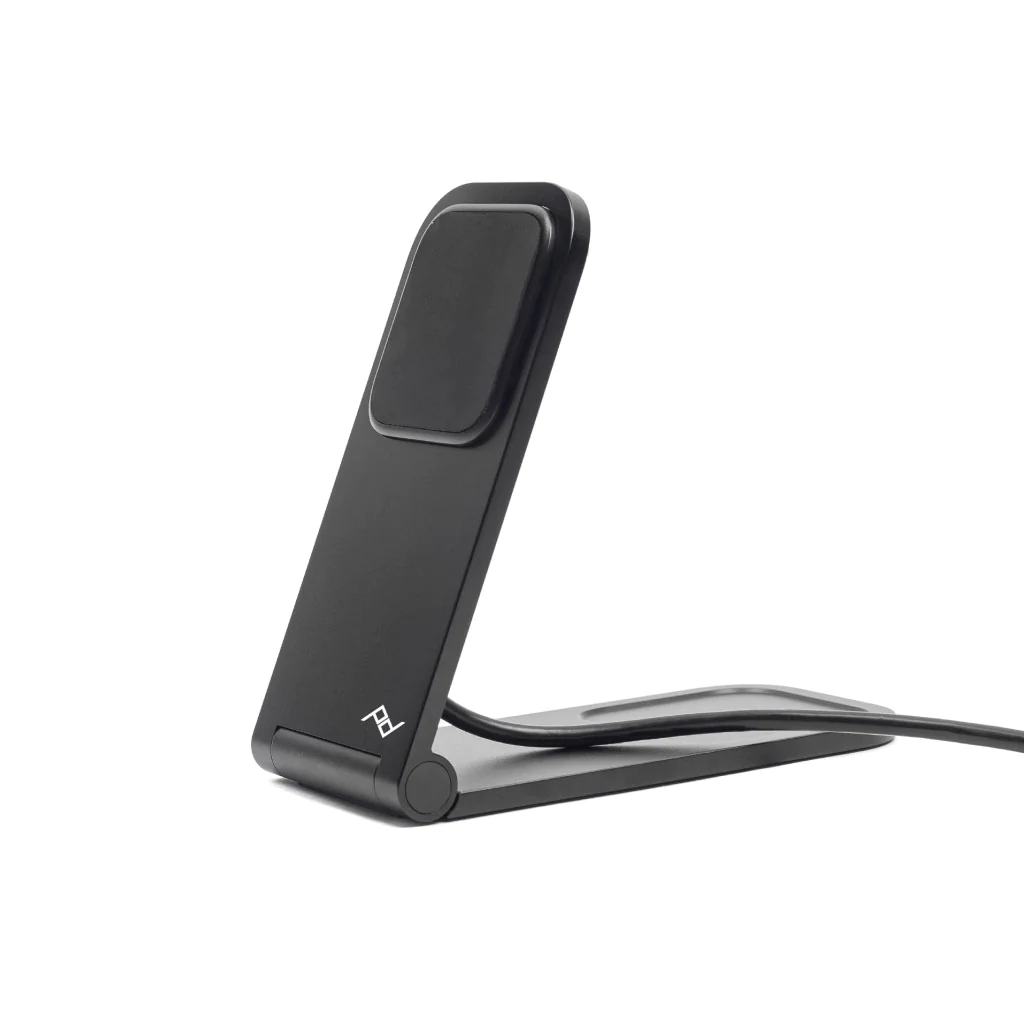
The Peak Design Mobile Wireless Charging Stand is a great option for those who want a Qi wireless charger that can also be used as a stand. It has a sleek and minimalist design, and it can be adjusted to different angles so you can view your phone while it’s charging. It also offers fast charging speeds for a wide range of devices.
Qi charging tips
Here are some tips for using Qi charging effectively:
- Use a compatible Qi charger. Not all wireless chargers are created equal. Make sure the charger you’re using is compatible with your device. You can check the manufacturer’s website or the charger’s packaging to see if it’s compatible.
- Place your device correctly on the charger. Qi chargers have a specific charging area, so make sure your device is centered on the pad. You may need to adjust the position of your device until it starts charging.
- Remove any obstructions between your device and the charger. Metal objects, such as coins, keys, and cases, can interfere with Qi charging. Make sure there are no obstructions between your device and the charging pad before you try to charge it.
- Use a Qi charging case. A Qi charging case can make it easier to charge your device wirelessly. It also protects your device from scratches and bumps.
- Keep your Qi charging pad clean. A dirty charging pad can reduce the charging speed or prevent your device from charging altogether. Make sure to clean your charging pad regularly with a soft, dry cloth.
Is Qi charging safe for your smartphone
Qi charging is safe because it uses low-energy electromagnetic waves.
These waves are non-ionizing, which means they do not have enough energy to damage DNA. Qi charging also has built-in safety features, such as foreign object detection and thermal management, to prevent your device from overheating or being damaged by metal objects.
Does Qi charging use magnets?
Qi charging does use magnets. Qi chargers have a magnet inside of them that helps to align the charging coil in the charger with the charging coil in the device. This helps to ensure that the two coils are properly aligned so that power can be transferred efficiently.
However, the magnets used in Qi charging are very weak and do not pose any risk to your device. The magnets are also shielded from the outside world, so they will not interfere with other electronic devices or credit cards.
In fact, the magnets in Qi chargers can actually be beneficial. They help to keep your device in place while it is charging, so you don’t have to worry about it accidentally being knocked off of the charger.
Does Qi charging need a power source?
Qi charging needs a power source. Qi chargers are not batteries, so they need to be plugged into a wall outlet or other power source in order to charge your device.
However, there are some Qi chargers that have built-in batteries. These chargers can be used to charge your device wirelessly even when you are not near a power outlet. However, the battery in these chargers will eventually run out of power, so you will need to plug them in to recharge them.
If you are looking for a Qi charger that is convenient and easy to use, then I recommend getting a charger that plugs into a wall outlet. These chargers are typically less expensive than battery-powered chargers, and they will always be ready to charge your device when you need them.
What is the frequency of a Qi charger?
Qi chargers operate at a frequency of between 110 and 205 kHz for low-power chargers (up to 5W) and 80 and 300 kHz for medium-power chargers (up to 120W). This frequency range is well below the frequency of visible light, so Qi charging is safe for human eyes.
Qi chargers use a resonant coupling method to transfer power from the charger to the device.
This means that the charger and device must be tuned to the same frequency in order for charging to occur. When the two coils are aligned and tuned to the same frequency, a magnetic field is created that transfers power from the charger to the device.
The frequency of a Qi charger is important because it determines the efficiency of the charging process.
Higher frequencies allow for faster charging, but they also require more precise alignment of the charger and device. Lower frequencies are more forgiving of misalignment, but they also charge more slowly.
Qi chargers are designed to be safe and easy to use. The low frequency of operation ensures that Qi charging is safe for human eyes and other electronic devices. The resonant coupling method also helps to prevent overheating and other safety hazards.
Do metal plates block wireless charging?
Metal plates can block wireless charging. Qi chargers use electromagnetic induction to transfer power to devices, and metal can interfere with this process.
If you have a metal plate on the back of your phone or case, it can prevent your phone from charging wirelessly. The plate can also cause your phone to overheat, which can damage the battery.
If you want to use wireless charging with a metal plate on your phone, you can try moving the plate to a different location on the back of your phone or case. You can also try using a different wireless charger, as some chargers are more powerful than others and may be able to penetrate the metal plate.
However, the best way to ensure that your phone charges wirelessly is to remove the metal plate altogether. If you need to use a metal plate, you can try using a plastic case with a built-in metal plate. These cases are designed to allow wireless charging to work even with the metal plate in place.
What is the difference between Qi and Qi2?
Qi2 is the next generation of the Qi wireless charging standard. It is designed to be more efficient, faster, and safer than the original Qi standard.
Here are some of the key differences between Qi and Qi2:
- Efficiency: Qi2 is more efficient than Qi, meaning that it can charge your device faster while using less power.
- Speed: Qi2 supports faster charging speeds than Qi. The initial Qi2 standard will support 15W charging, but it is expected that future versions will support even faster speeds.
- Safety: Qi2 includes new safety features that help to protect your device from overheating and other damage.
Another key difference between Qi and Qi2 is that Qi2 uses magnets to align the charging coils in the charger and device. This ensures that the coils are always properly aligned, which results in more efficient and faster charging.
Does Qi damage battery?
Qi charging does not damage your battery. Qi charging is a safe and efficient way to charge your device. It uses electromagnetic induction to transfer power from the charger to the device, which is the same technology that is used in electric toothbrushes and other devices.
Qi charging does generate some heat, but it is not enough to damage your battery. In fact, most Qi chargers have built-in safety features to prevent overheating.
What is the difference between Qi and wireless charging?
Qi is a type of wireless charging that uses inductive charging.
Wireless charging is a broader term that encompasses all types of wireless charging, including Qi. Other types of wireless charging include resonant charging and magnetic resonance coupling.
Qi is the most popular type of wireless charging because it is efficient, safe, and easy to use. Qi chargers are also relatively inexpensive and can be found in a variety of places, such as homes, offices, and public spaces.
Here are some of the key differences between Qi and wireless charging:
- Technology: Qi uses inductive charging, while other types of wireless charging may use resonant charging or magnetic resonance coupling.
- Efficiency: Qi is a very efficient type of wireless charging.
- Safety: Qi is a safe way to charge your device.
- Ease of use: Qi chargers are easy to use. Simply place your device on the charger and it will start charging.
- Availability: Qi chargers are widely available and relatively inexpensive.
Personal experience
I’ve been using Qi charging for about two years now, and I absolutely love it. It’s so convenient to just place my phone on a pad and have it start charging. I don’t have to worry about fumbling with cables or finding an outlet.
I use Qi charging at home and at work. I have a Qi charging pad on my desk at work, and I have one on my nightstand at home. I also have a Qi charging pad in my car.
I’ve found that Qi charging is just as fast as wired charging, if not faster. My phone is usually fully charged in about an hour.
I’ve also found that Qi charging is very reliable. I’ve never had any problems with my phone not charging properly.



